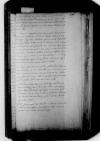List #5767
Alfonso de VALDÉS do Ioannes DANTISCUS[Brussels], [ca. 1531-09-26]
Regest polski: Valdes przesyła Dantyszkowi kopię listu, którego oryginał nie został jeszcze podpisany. Dantyszek ma go otrzymać tegoż dnia wraz z przywilejami, bez opłaty. Król Francji nie przybędzie na sejm, ponieważ nie odpowiadają mu warunki, jakie postawił cesarz, mianowicie aby nie wspominać o zmianie postanowień traktatu w Cambrai, oficjalnie jednak Balançon podaje jako powód chorobę matki króla. Cesarz przybędzie do Spiry na pewno. Mówi się, że wyruszy za osiem dni, Valdes jednak nie przypuszcza, aby stało się to wcześniej, niż za piętnaście dni, chyba że król rzymski [Ferdynand] będzie ponaglał.
Rękopiśmienne podstawy źródłowe:
Pomocnicze podstawy źródłowe:
Publikacje:
| ||||||||||||||||||||
Tekst + aparat krytyczny + komentarz Zwykły tekst Tekst + komentarz Tekst + aparat krytyczny
Salutem.
Litterarum exemplum ms 1 (ut iubes),
print 1 ut iubes,
ms 2 ut iubes⌈(ut iubes)ms 1 (ut iubes),
print 1 ut iubes,
ms 2 ut iubes⌉ mitto. Litterae ipsae nondum sunt subscriptae, print 1 eas,
ms 1 cras,
ms 2 eas⌈easprint 1 eas,
ms 1 cras,
ms 2 eas⌉ tamen habebis hodie una cum privilegiis absque taxa.
ms 1 Spiram,
ms 2 Spirum⌈Spiramprint 1 Spiram,
ms 1 Spiram,
ms 2 Spirum⌉
ms 1 2 [hinc] gap left by scribe⌈hincprint 1 hinc,
ms 1 2 [hinc] gap left by scribe⌉ discessurum, quod ego neque ante print 1 quindecim,
ms 1 2 quindecem⌈quindecimprint 1 quindecim,
ms 1 2 quindecem⌉ crederem, ni regem
print 1 Romanum⌈Romanorumms 1 2 Romanorum,
print 1 Romanum⌉
Vale.
print 1 Tuus Valdesius,
ms 1 2 omitted⌈Tuus
ms 1 2 omitted⌉

 BK 222, No. 58, p. 206
BK 222, No. 58, p. 206